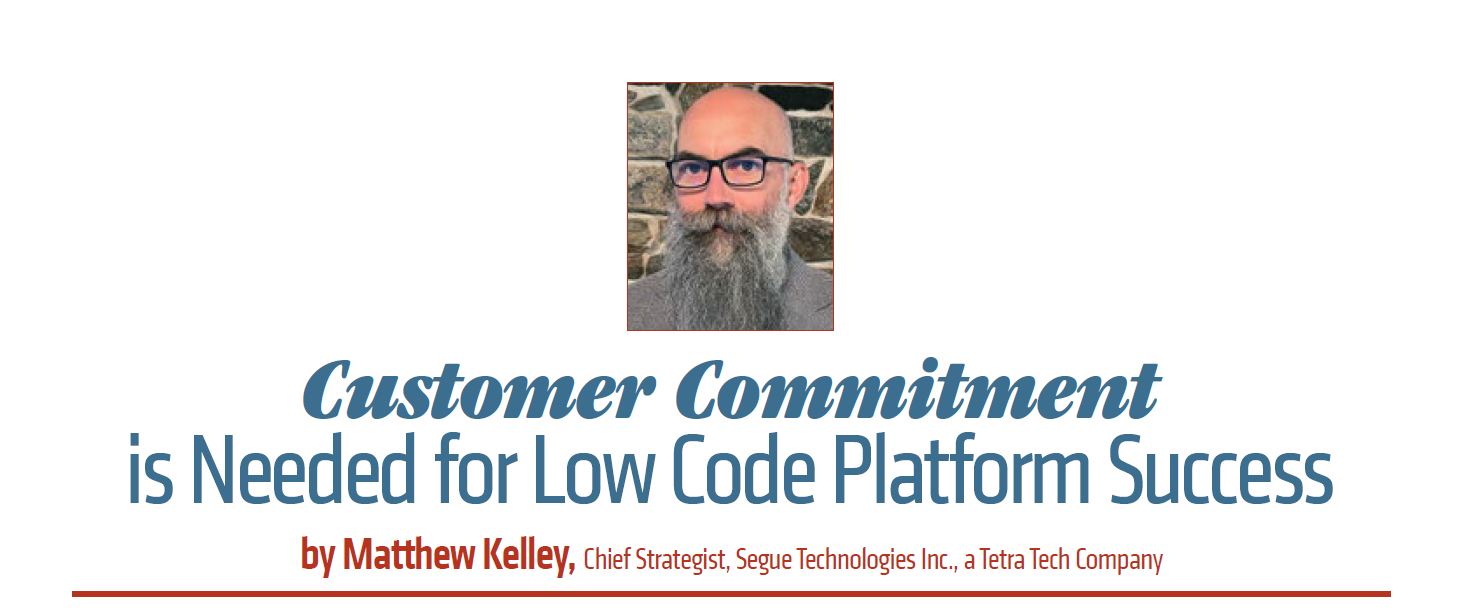
Low Code platforms are an excellent option for organizations to quickly modernize their enterprise portfolio of information systems. They provide a development environment where software is created from a “drag and drop” of existing templates, thus requiring little to no coding.
Low Code is particularly attractive if current applications need to be refactored and updated for cloud readiness. It offers a cloud migration short cut, where business processes can be quickly built out in a cloud platform, in addition to resolving any legacy software issues, thus migrating the capability, not the applications. Low Code also offers cross-platform compatibility, so software is available on web browsers, tablets, and mobile devices simultaneously.
These are some of the key benefits of Low Code platforms, but they require organizational commitment to realize. The Low Code approach is designed to ease the burden and cost of development and maintenance of software and shift the ownership of critical business systems into the hands of power users instead of relying on contracted support teams. In assessing a Low Code modernization path, an organization needs to be ready to commit to the following:
Invest in Agile Development Education and Resources
Low Code platforms are designed for an Agile development approach, focusing on identifying capability in the form of “user stories,” rapid prototyping, and working closely with the user community to shape the application based on priorities and feedback. This requires the customer organization to participate in development as a member of the Agile team. Customer resources need availability for daily standups, product review and feedback, and Agile process training.
Take an Enterprise-Wide View of System Modernization
You need to fully embrace Low Code as a holistic approach to a new Enterprise platform to realize the full return on investment. For a stand-alone application, Low Code license costs can be very pricey. However, if you consider replacing an existing workflow that goes across multiple single function applications, with a low code workflow that integrates all of your business processes into a single platform, then the investment makes much more sense. This enterprise approach eliminates multiple system sustainment teams, hardware costs, system interfaces, and streamlines platform maintenance.
Provide Training for Power Users
The ultimate benefit of the Low Code platform is the promise of the “Citizen Developer.” This power user comes from the organization as a mission expert and primary user of the business system. For a traditional application, they are the voice of whether the software works well or not. Now under a Low Code scenario, they are able to build out their own capability without having to engage a development team. They know the requirements, can build the component, and they’ll know immediately if it is working right or not. This cuts out the need for a development team on standby and an extended communication cycle from requirements through testing and release. However, the Citizen Developer needs training on the platform, to be inclined to take on this technical role, and time and duties aligned with developing capability for themselves and/or on behalf of the rest of the user community.
Establish a Center of Excellence (COE)
A Center of Excellence (COE) is another critical commitment by the organization to ensure effective implementation of the Low Code platform across the enterprise. The COE houses technical experts who focus on reuse, security and performance. The COE provides leadership and mentoring, but also creates and maintains reusable components from which citizen developers create their own business processes. In addition, the COE maintains standards and operating procedures to ensure the quality of applications.
In total, organizations need to go all in on a Low Code platform to truly achieve what they promise. Look at your users and your full application portfolio to see if you are ready and able to invest in the organizational change needed. Is your team ready to take ownership of their information systems by becoming Agile low code platform developers? Are you ready to sunset all of your current systems as you roll out a flexible and scalable cloud platform that integrates your data and workflows? Hopefully the answer is yes, and your team is primed to follow through and commit to this new development environment.
This article appears in the Spring 2021 Service Contractor.